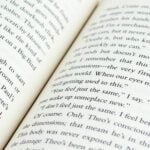
What Are the Different Types of Editing?
Did you know that there’s more than one type of editing? In fact, a piece of content may go through several rounds of editing before publication, each round addressing a different issue. In this post, then, we’ll review the different types of editing and what’s involved in every step of the process – including practical examples of each. Keep reading to get started.
3 Different Types of Editing
All content – whether digital or print – needs to be edited prior to publication. However, there are actually several different types of editing, each occurring at a different stage of the publishing process. While definitions of the types of editing can vary depending on where you look, they can be broadly divided into three categories:
1. Developmental Editing
Developmental editing, or substantive editing, is the first step in the editing process, usually taking place after the first draft of a text is complete (or sometimes even before a complete draft is written). It involves guiding the author through any major changes they need to make to the overall content or structure of a text. Rather than going line by line to make edits, a developmental editor will make suggestions to improve the “big picture” aspects, such as plot, narrative elements, and character development.
This stage in the editing process often involves a good amount of collaboration between the author and editor. Since developmental editing usually involves significant changes to a manuscript, the editor will not implement the suggestions themselves. Rather, the author and editor discuss the suggested changes, and then the author takes the potential edits into consideration as they make rewrites and work on another draft.
Here’s an example of what a passage might look like before developmental editing:
I walked into the room. It was dark and musty. I felt scared. There was a noise coming from the corner. I looked and saw a shadow. It moved. I screamed and ran out of the room.
And after developmental editing:
I cautiously stepped into the dimly lit room, the musty scent of neglect tickling my nostrils. My heart pounded in my chest as I scanned the shadows, every creak of the old floorboards sending shivers down my spine. Suddenly, a movement caught my eye – a flicker of darkness in the corner. Before I could react, a figure emerged, sending me into a frenzied sprint out of the room, my screams echoing down the hallway.
In this example, the level of editing is more intensive and involves some rewriting. We’ve enhanced the atmosphere and setting of the story by adding more sensory details and descriptive language, and we’ve added more details to the plot to paint a more vivid picture for the reader. However, we’ve done our best to avoid altering the intended meaning and sequence of events of the scene.
2. Line Editing
Line editing is the next stage in the editing process, occurring after developmental editing. At this point, the structure and major elements of the content have been addressed, so line editing focuses on issues such as:
- Vocabulary choices
- Syntax and sentence structure
- Pacing
- Repetition and redundancy
- Concision
- Minor formatting inconsistencies
While a line editor can address surface-level issues such as grammar and punctuation errors they find during their edit, they typically concentrate more on improving the overall tone and style during this stage.
Here’s an example of a text before it’s been line edited:
The big round moon up above was shining brightly and clearly in the night sky, which cast a silvery glowing effect over the sleepy town. Glenn walked down the deserted avenue, his footsteps going click-clack in the quietness. Feeling a sense of unease creeping up his spine, he approached the old abandoned mansion. The windows were dark, and the ivy-covered walls seemed to say previous secrets. Glenn hesitated for a brief moment and then quickly built up the courage to enter.
And after line editing:
The moon was shining brightly in the night sky, casting a silvery glow over the sleepy town. Glenn walked down the deserted street, his footsteps echoing in the quietness. He felt a sense of unease creeping up his spine as he approached the old abandoned mansion. The windows were dark, and the ivy-covered walls seemed to whisper secrets of the past. Glenn hesitated for a moment before mustering up the courage to enter.
As you can see, we’ve gone through each line of content and focused on fixing issues such as repetition, incorrect word choice, and poor sentence structure. We eliminated some wordiness by removing unnecessary adjectives in the first sentence (“big” and “round”) and revised sections of the content for accuracy and clarity. The edited passage retains the original meaning but is more concise, flows more smoothly, and uses stronger, more evocative language.
3. Copy Editing
Copy editing, sometimes combined with line editing, is the last step in the editing process before proofreading. It’s a more detailed and focused form of editing than line editing. It involves reviewing the content line by line to improve readability, address inconsistencies (such as with capitalization or spelling), and ensure adherence to the client’s chosen dialect and style guide. Punctuation and grammar mistakes are also addressed at this stage, although a greater focus is placed on more in-depth issues like clarity and readability. Here’s an example of a text before copy editing:
The weather was beautiful that day. Clear skies and a gentle breeze rustled through the trees. Sarah decided to take a walk in the park, to enjoy the sunshine. As Sarah strolls along the winding paths, she couldn’t help but marvel at the beauty of the park. Birds chirped melodiously, and colourful flowers bloomed all around her. It was a Perfect day, for relaxation and rejuvenation.
And after copy editing:
The weather was beautiful that day, with clear skies and a gentle breeze rustling through the trees. Sarah decided to take a walk in the park to enjoy the sunshine. As she strolled along the winding paths, she couldn’t help but marvel at the beauty of nature. Birds chirped melodiously, and colorful flowers bloomed all around her. It was a perfect day for relaxation and rejuvenation.
In this example, focusing mostly on mechanical issues, we:
- Eliminated two unnecessary commas
- Fixed a verb tense error (“strolls”)
- Combined two sentences to improve readability
- Revised the spelling of “colorful” to match our client’s chosen dialect (US English)
- Addressed an instance of incorrect capitalization
- Replaced one instance of the character’s name with a pronoun to avoid repetition
As you may have noticed, we didn’t alter the actual content of the passage, as any major issues relating to the overall story or structure would have been addressed earlier.
Becoming A Freelance Editor
Are you interested in learning more about advanced editing techniques, including how developmental, line, and copy editing fit into the publishing process? Check out our comprehensive Becoming An Editor course, and claim your free lessons today!





Your email address will not be published.